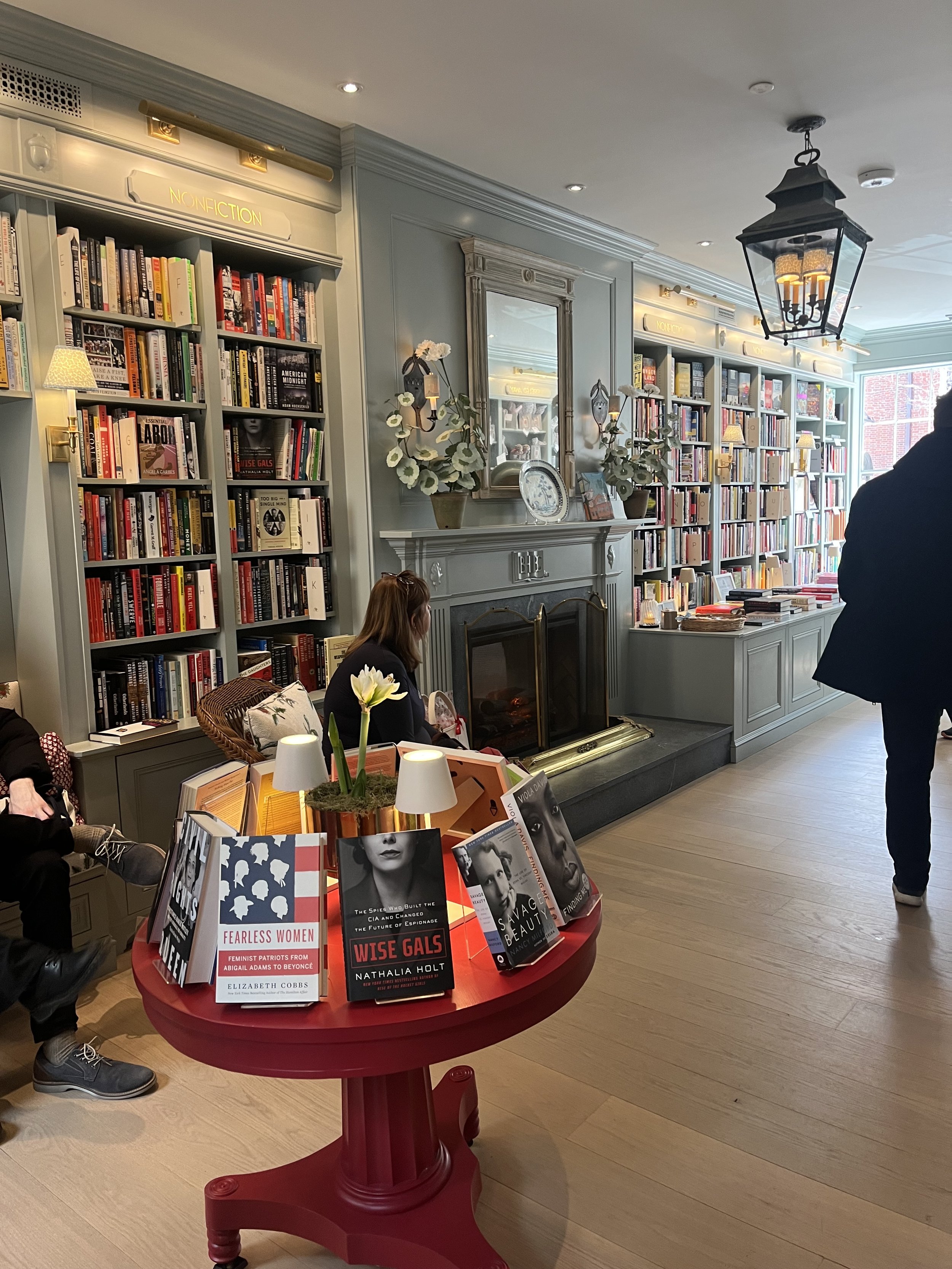Brighter Days
Aahh Spring! There’s nothing like seeing the first magnolia blossoms purpling the branches to make you want to get out and do stuff. New stuff, stuff that inspires. What other season makes you want to say “aahh”? This is the shut-the-laptop, silence-the-phone, escape-the-office and enjoy-the-achingly-blue-sky-before anyone-notices-you’re-missing season. This is the busy sidewalks, park bench with a book, take the long way with your dog season. This is longer days, soft air and lemonade. This is Boston at its best.
“…Season of joy for the bee. The green will never again be so green, so purely and lushly new…
”
As always, there’s much going on that you won’t want to miss.
You might start in Lincoln.
Melvin Edwards: Brighter Days
The DeCordova Sculpture Park and Museum, Lincoln
Through April 30, 2023
You have four more weeks to catch a special exhibition of one of our country’s foremost abstract sculptors at the DeCordova Sculpture Park. Melvin Edwards, the Houston-born artist who became, in 1970, the first Black sculptor to have a solo exhibition at the Whitney Museum of American Art, creates hugely emotional works confronting black history and experience.
Brighter Days features five Melvin Edwards sculptures created from 1970 to 1996, and a 6th commissioned in 2020 for the exhibition. Go on a warm day and watch as the light catches the curving forms, consider how they take up space and interrupt an assumed forward momentum. In both form and message, they force a reckoning with history and admiration for the power of metallurgy.
A vanguard in large-scale sculpture and public art, Edwards employs unique juxtapositions to evoke softness in the hardest materials. He also makes smaller works composed of chains, barbed wire, tools and machine parts. What is more complex than a chain - a string of forged links? While conjuring bondage, slavery and incarceration, it also speaks to connection, loyalty and shared experience.
Melvin Edwards, “Song of the Broken Chains,” 2020.
As his title indicates, Edwards’ show is full of optimism, resiliency and a spring-like hope.
“I have always understood the brutalist connotations inherent in materials like barbed wire and links of chain and my creative thoughts have always anticipated the beauty of utilizing that necessary complexity which arises from the use of these materials in what could be called a straight formalist style.” - Melvin Edwards
Melvin Edwards , Homage to Coco, 1970 , Courtesy Alexander Gray Associates, New York; Stephen Friedman Gallery, London © 2022 Melvin Edwards/ Artists Rights Society (ARS), New York. Image: Julia Featheringill
Hokusai: Inspiration and Influence
Museum of Fine Arts Boston
March 26 - July 16, 2023
Back in Boston, a very different kind of show is now open at the Museum of Fine Arts. The long-awaited Hokusai: Inspiration and Influence at the MFA has been heralded as one of 2023’s most important exhibitions in the US.
Thanks to work such as the Under the Wave off Kanagawa or The Great Wave, (see title image) Katsushika Hokusai (1760–1849) has become one of the most recognized artists in the world. (Ever use the wave emoji? That’s inspired by him). This show, curated by Sarah Thompson, MFA’s curator of Japanese Art, features woodblock prints, paintings, and illustrated books by Hokusai in proximal conversation with hundreds of works in various mediums by Hokusai’s influences and admirers.
This show builds on a storied history of collaboration between the museum and Japan. In fact, the MFA became the first American museum to build a dedicated Japanese collection all the way back in 1890. Today, the museum’s Asian art collection, especially Japanese art, is considered the best outside Japan.
An entire room of the exhibit is devoted to The Great Wave, placing the work it in conversation with artworks it inspired - paintings, sculptures, drawings, digital images and even Legos. Though much about Hokusai’s personal life is shrouded in mystery, one daughter, Katsushika Ōi (1800-1866), became an artist in her own right and her work is included in the show.
We live in an age of easy, endless reproduction. The Great Wave can be found in everything from dorm room posters to t-shirts to screen savers. Take advantage of a rare chance to stand before the original and other works by a true master, and appreciate the wide-ranging work they have inspired.
Hokusai, Katsushika. Under the Wave off Kanagawa or The Great Wave (Kanagawa-oki nami-ura), 1830 – 31, Woodblock print (nishiki-e) and ink and color on paper,
Hokusai’s work is said to have inspired Monet, Degas and even Van Gogh.
More recently, it deeply inspired the novelist Gabrielle Zevin.
Find a nice park bench and dive in.
Tomorrow and Tomorrow and Tomorrow
by Gabrielle Zevin
Don’t be misled thinking this is a novel about video games which will go right over your head if you don’t play them. Though Zevin’s protagonists are video game creators and games do play a large role in the plot, the story is about lifelong friendships, the bonds forged over creative work and the minefields of modern romantic relationships. Over the course of many decades, the characters and their creative homebases move from California to Cambridge and back again.
Zevin borrowed “tomorrow and tomorrow and tomorrow” from Shakespeare, and many of the novel’s games - thanks to protagonist Sadie Green - feature literature and poetry. But the title is also a nod to the ability of games to thwart mortality. In a game one always has another life, but IRL, death ends the game forever.
Zevin has said she was interested in writing characters coming of age alongside an industry, and it’s addictively fun to grow up with these characters and their work.
Hokusai’s great wave is Sadie’s design inspiration for her first commercial game, which catapults her and her partner Sam to fame. Accessible yet historic, Japanese yet universal, terrifying yet exciting, it sets the tone not only for that game, but for the novel. Another wave is always coming. But will this one crush the rowers or catapult them to fresh adventure in a calmer sea? Sometimes fictional worlds are a safer place for characters to navigate their own stormy seas.
Trust
by Hernan Diaz
In Hernan Diaz’s novel Trust, the reader confronts the concept of fiction in a much less direct way. Told in four parts, each from a different point of view, the truth of the story become less and less concrete, with each section further blurring the line between fact and fiction. What is truth, and therefore, what is trust? Plays on words abound. The novel challenges trust in personal relationships, economic systems, the way history is told and in voice.
I read Trust during the fall of Silicon Valley Bank. Reading the four takes on the life of financial giant Andrew Bevel, I came to think Trust is about everything present day - banking, our global economic system, Trump, the vulnerability of the public, and how we came to accept such unabated inequality at the hands of powerful capitalists.
The story is about money, but it is also about power; the way powerful people reconstruct the past to their liking. Bevel puts great energy into cementing a record of his life as he wants it to be told. Diaz shows how fraught it is to trust the pages of history, told by “great men” like him. The last section, excerpts from Bevel’s wife’s diary, throw everything that came before into question.
Can we trust anything we read or hear? All news by nature is skewed. Like four echo chambers, each section’s author has their own agenda, sort of like turning the television to four different news channels.
Both of these great books you can find at the most spring-like new bookstore in Boston.
Beacon Hill Books & Cafe
71 Charles Street, Boston
There’s been so much excitement about Boston’s new independent bookstore on historic Charles Street one might worry it couldn’t possibly live up. But Beacon Hill Books & Cafe more than meets expectations from the cozy, warm vibe to the creative title selections, to the various comfy spots to sit and read. A quaint cafe on the ground floor serving breakfast, lunch and afternoon tea is a great spot (if you can get a rez) to meet a friend and pour over your purchases.
How nice to have a new reason to luxuriate in the rewards of physical printed books and the company of those who love them.
Though it is, like all townhouses, not especially spacious, the store is determinedly child friendly. The children’s section is designed with little ones in mind, child sized chairs and a table with a tea set, and books which encourage kids to pick their own. Above the bookshelves a miniature train with the store’s mascot, Paige the Squirrel riding along will keep them busy while you read through what you’ve found.
Other spring events on our list:
Red Sox Home Opener - Tonight!!
Simone Leigh selections from the Venice Biennale at the ICA Boston. April 6 - September 4, 2023
After Hope: Videos of Resistance at the Peabody Essex Museum. March 11 - December 31, 2023

















